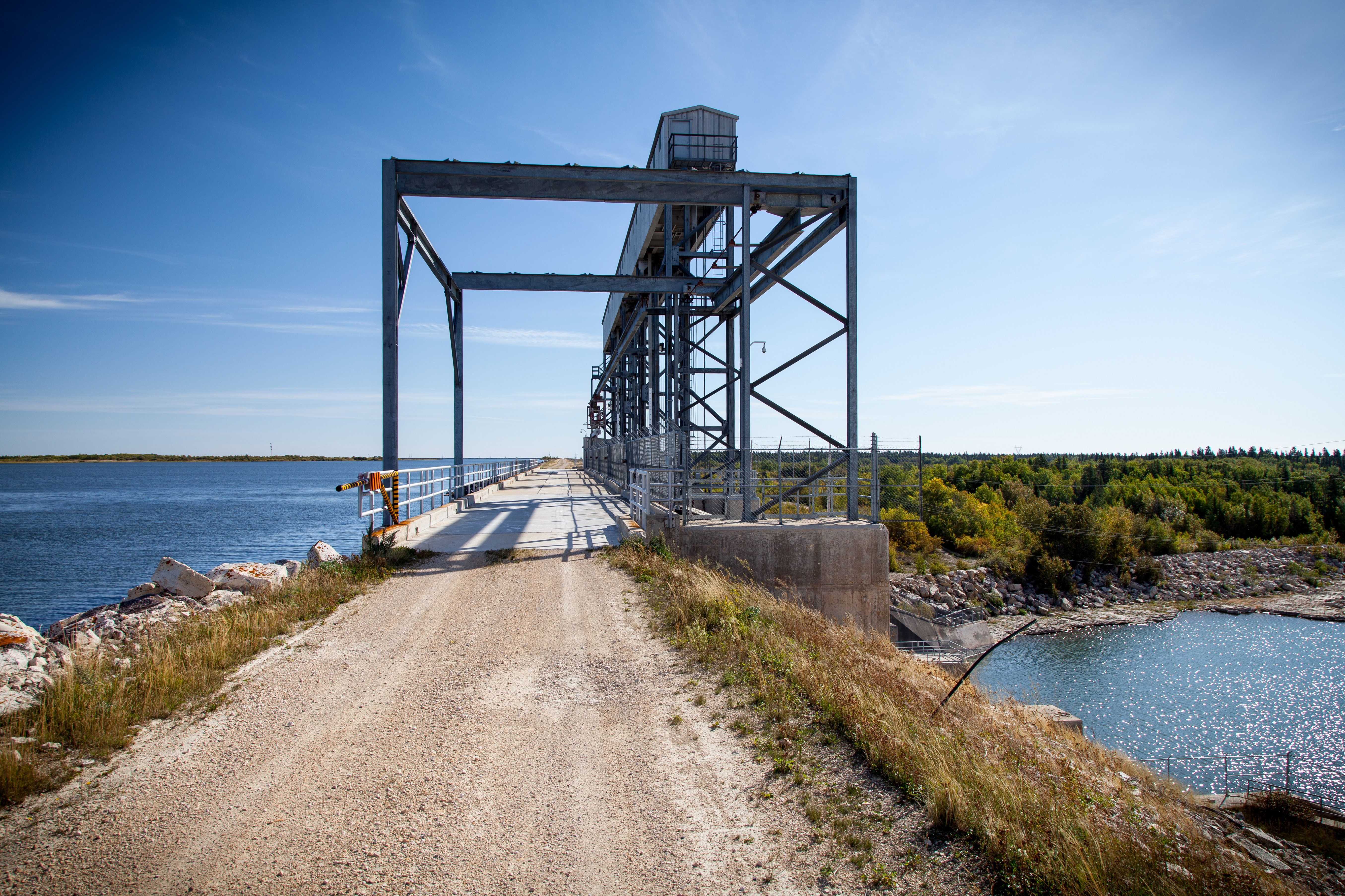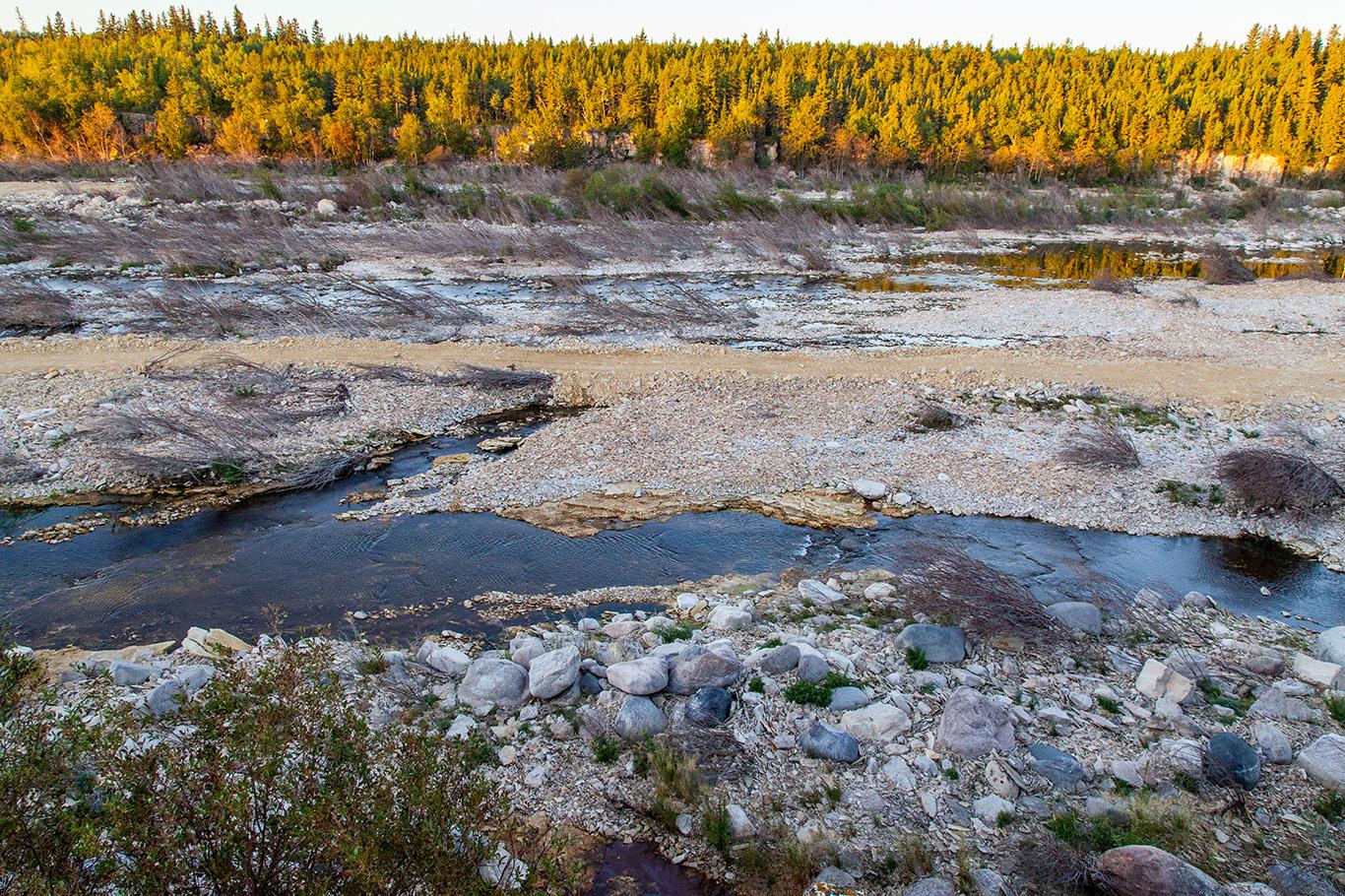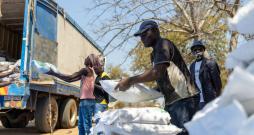"That grief that never goes away"
The unseen byproducts of hydropower

In much of Canada, hydroelectric power is touted as a clean, green energy source unburdened by the greenhouse gas emissions or refuse disposal problems that plague coal-fired or nuclear power plants. Nearly 60% of Canada’s power is generated by hydroelectric means, but in a handful of provinces, the percentage is much higher — like Manitoba’s 97%.
And while it is true that the hydroelectric generators themselves don’t contribute harmful byproducts into our environment directly, the development required to operate them — dams, reservoirs and diversions — leads to major adverse impacts on Indigenous nations, animals and plants. Even technologies that appear green on the surface can have far-reaching impacts that disrupt the long-term peace for communities around them.
For nearly five decades, MCC has worked alongside the Interfaith Council on Hydropower (ICH) advocating for fair treatment of people and lands impacted by hydroelectric development in northern Manitoba. After the Churchill River Diversion was created and it massively re-engineered the natural northern watershed, the Interchurch Task Force on Northern Flooding was established. The work of the task force continues now through ICH, with representatives from a variety of faith backgrounds, seeking to follow the lead of Indigenous friends and partners whose lives and communities have been greatly affected by hydro.
Ellen Cook, from Misipawistik (Grand Rapids) Cree Nation, is co-chair of the ICH and says she saw firsthand the impacts of hydroelectric development when the Grand Rapids dam was constructed in the ‘60s and it erased a swath of the nation’s territory.
“It has left me with grief that I don't think will ever go away because I know what the land was like before the dam was built,” says Cook. “I knew the rapids and the river and the lakes before everything came in. All our beautiful camping areas and foraging and gathering areas — they're all underwater, and that is something that I feel we will never get back. Unless a dam is decommissioned. But even still, it'll never be the same. It's just that grief that never goes away.”
The large reservoirs created by damming waterways like the rapids near Misipawistik also contribute directly to climate change. As biomass is left underwater, it gets broken down, but in the low-oxygen environment, much more of it is converted to methane — a greenhouse gas about 80 times more harmful to the atmosphere over time compared to CO2.
Because of this effect, researchers have found that around 1.3% of man-made greenhouse gas emissions are accounted for from large water reservoirs — though it’s important to note that their research included reservoirs used for drinking water, farm irrigation and other sources in addition to hydropower. So, while the spinning of the turbines in a hydroelectric power plant doesn’t produce pollutants directly, we do a disservice to the environment when we forget there are other parts of the process.

And unfortunately, in Canada, it’s overwhelmingly Indigenous communities that feel these “hidden” costs. Cook says the harm done to hydro-affected communities has had a detrimental effect on the next generation, leaving them hopeless, unconnected and without peace. Climate advocates have a term for when the health and well-being of one community are effectively leveraged against the economic gains of another — sacrifice zones. And overwhelmingly in Manitoba, it’s Indigenous communities that are being sacrificed.
“It has progressively gotten worse over the years where there was a lot of apathy and sadness, a lot of lateral violence, people fending for themselves. And then the alcoholism became worse … I don't know if things would have been different if the community would have still been isolated to this day.”
Her work with the ICH is mostly based in public advocacy around hydropower-related justice, working to make sure Indigenous communities are consulted and respected before projects that would affect them and their land are started. She says she’s looking forward to a series of Kokum’s (Grandmother in Cree) gatherings that are intended to give a louder voice to the intergenerational wisdom held by kokums across northern impacted communities. Cook facilitated one such gathering this summer in Grand Rapids.
“What we want to do is have community exchanges with young people and grandmothers and go to the different communities and talk to the young people in the schools,” she says. “These are the grandmothers that knew what life was like before hydro came into our communities.”

The work of the ICH has seemingly borne fruit in Manitoba. Recently the government announced that as power needs continue to grow in the province, hydroelectric dams will not be the method used to add capacity. What that doesn’t address, however, is the still-rising need for electricity in the province, which is already near its current power limits. Wind or solar energy generation, though viable, would still require a significant amount of construction and infrastructure, and it’s groups like the ICH who will need to continue to work to ensure Indigenous communities are not bearing an unfair amount of the burden of that growth.
This work is becoming even more important as the impacts of climate change continue to grow. MCC offices on Treaty 1 territory also consume hydroelectricity generated from plants near places like Misipawistik. As Christians and as a peacebuilding organization, it is important to ensure that when there are resources we benefit from, there is also justice for the people and land where those resources come from.
It's essential now more than ever for us to highlight climate change mitigation as an essential priority so that communities like Cook’s are not sacrificed in the name of “eco-friendliness” along the way. Visit MCC’s climate action platform, Climate Action for Peace, for ways you can impact Canada’s approach to issues like this.
Header photo caption: The spillway of the Grand Rapids Dam holds back a 30-metre-high wall of water in Cedar Lake (left). ICH photo/Matthew Sawatzky

